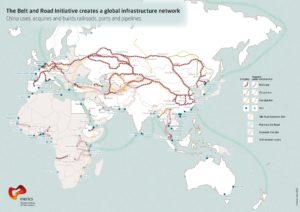Cosmetics regulations in China: What foreign brands need to know
Cosmetics regulations in China: What foreign brands need to know
The Chinese cosmetics market has become a major global player, attracting many foreign brands. However, setting up a successful business in China requires a thorough understanding of the strict regulations that govern the sector. This article examines the key regulations concerning cosmetics ingredients in China, their importation, marketing and commercialisation, with a particular focus on the implications for foreign brands.
The new CSAR regulations
On 1 January 2021, China introduced a new global regulatory framework for cosmetics: the Cosmetic Supervision and Administration Regulation (CSAR). This regulation replaces the old rules dating back to 1989 and aims to improve the safety, quality and efficacy of cosmetic products on the Chinese market. The CSAR introduces an obligation to assess the safety of each product and strengthens control throughout the product life cycle. The regulation also introduces new requirements for efficacy claims and new definitions and classifications for cosmetic products and their ingredients.
Although the CSAR has officially been in force since 2021, its full implementation is being phased in gradually until 2024, with the introduction of additional implementing regulations. The list of prohibited ingredients drawn up by the National Medical Products Administration (NMPA), for example, has been regularly amended and extended since 21 March 2024 to include 5 new ingredients. At the same time, the testing protocols have been modified and will come into force in December 2024. This change introduces 11 new test methods and revises 3 already in use.
From 1 May 2024, all cosmetic products marketed in China will have to undergo a full safety assessment, replacing the simplified version currently accepted.
The inventory of cosmetic ingredients (IECIC 2021) has been updated. It lists the 8783 authorised ingredients. Safety data for all new ingredients must be submitted to the authorities. The aim of this regulatory update is to better control the quality and safety of cosmetics imported or produced in China, in a fast-growing market.
Importation of Cosmetic Products
Product registration :
Before importing cosmetic products into China, foreign brands must register their products with the National Medical Products Administration (NMPA). This process can be complex and time-consuming, requiring the submission of detailed technical files, safety tests and compliance with local standards. For example, so-called ‘special cosmetics’ (such as sun protection products, hair dyes and hair loss products) must be registered and tested, a process that can take several months.
Animal Testing Requirements :
Historically, China required animal testing for all imported cosmetics, which posed an ethical problem for many international brands. Since May 2021, so-called “ordinary” cosmetics (such as skin care products, hygiene products and make-up) can be exempted from this requirement if certain conditions are met, such as Good Manufacturing Practice (GMP) certification by the country of origin.
Marketing and Sales
Advertising regulations :
All products, whether sold on the domestic market (offline or online) or on cross-border e-commerce (CBEC), must comply with Chinese advertising laws. Claims requiring administrative approval from the Chinese government are not permitted without the corresponding certificate. For example, cosmetics advertised as being for sensitive skin or simply improving skin elasticity must undergo efficacy tests on humans or consumer tests to assess the efficacy claim.
| Product | Supervision | Solution |
| Cosmetics with general claims: moisturising, anti-oxidant, etc. | Less strict | Regulatory restrictions can be avoided by using alternative arguments |
| Cosmetics with specific claims: sensitive skin, etc. | Very strict supervision | Sanctions will be applied if these claims are not accompanied by efficacy tests on humans or consumer tests. |
Sales channels :
- Cross Border E-Commerce: Supervised by the General Administration of Customs of China (GACC), trademarks will be reported to the local authorities by anti-counterfeiting professionals against the illegal use of arguments.
- Domestic market: Overseen by the State Administration for Market Regulation, advertising and designations are strictly supervised.
Ingredients and Formulation
List of Prohibited and Restricted Ingredients :
The NMPA maintains a list of prohibited and restricted ingredients in cosmetic products. Brands must ensure that their formulations comply with this list. For example, certain preservatives and colourings commonly used in other markets may be banned in China.
Certification of Ingredients :
Brands must also provide detailed information on the ingredients used in their products, including certificates of analysis and evidence of safety. New substances used in cosmetic products must be approved by the NMPA before being placed on the market.
Labelling and Packaging
Labelling requirements :
Cosmetic products sold in China must comply with strict labelling requirements. This includes the translation into Chinese of all relevant information, such as the name of the product, the list of ingredients, instructions for use and precautions. In addition, the label must include the name and address of the Chinese importer, and of the responsible body in the event of an incident.
Mandatory information :
The label must also indicate the date of manufacture and the product’s shelf life. Cosmetics intended for children or people with sensitive skin must include specific warnings. Failure to comply with labelling requirements may result in products being withdrawn from the market.
Cosmetics advertising
Cosmetics advertising in China is subject to strict rules to protect consumers from misleading information and unsubstantiated claims.
Prohibitions on advertising :
- Falsify or exaggerate the name, manufacturing method, ingredients, effectiveness or performance of cosmetic products.
- Using another person’s name to guarantee or mislead others as to effectiveness.
- Communicate medical effects or use medical terminology (e.g. cosmeceuticals, prescriptions, antibacterials, sterilisation, etc.).
- Denigrate the similar products or services of other producers or operators.
- Using or concealing the name or image of a State body or its staff.
- Indicate or imply that the efficacy, quality or safety of cosmetic products have been recognised by the State authorities through registration, filing, certification and other activities of State bodies.
Authorised claims :
- Advertisements must be consistent with the content of the product registration or filing documents. For example, a product registered in China as having a whitening function cannot use the argument of sun protection.
- The following effects are authorised in China: hair dyeing, perming, freckle whitening, sunscreen, hair loss prevention, acne elimination, moisturising, anti-wrinkle, soothing, etc. Cosmetics claiming to have additional effects or to be suitable for specific groups must provide a special registration certificate.
- The data and quotations used in advertising must be true and accurate, and the source must be indicated.
Restrictions on Terms and Claims :
- It is forbidden to use terms such as “national level”, “superlative”, “best”, “first”, “premium”, “top”, “latest innovation”, “pure natural products”, “organic products”, “without side effects”, “food quality”, etc.
- The arguments “gentle and non-irritating”, “sensitive skin”, “does not sting the eyes” require an assessment of efficacy, including human efficacy tests, consumer tests or laboratory tests.
Conclusion
The cosmetics market in China represents a considerable opportunity for foreign brands, but it is governed by strict regulations that can be complex. Understanding import, marketing, formulation and labelling requirements is essential for a successful and sustainable business. Despite the challenges, brands that are able to comply with regulations and adapt their marketing strategies to local preferences can thrive in this dynamic and growing market. With growing demand for beauty products and an increasingly sophisticated consumer population, China offers exciting prospects for the global cosmetics industry.
If you are interested in the cosmetics market in China and would like to find out more about consumer habits, Chinese regulations governing the import and sale of skincare products and cosmetics, or the role and importance of the responsible body, contact VVR International. Our experts in the field will be happy to answer your questions.















